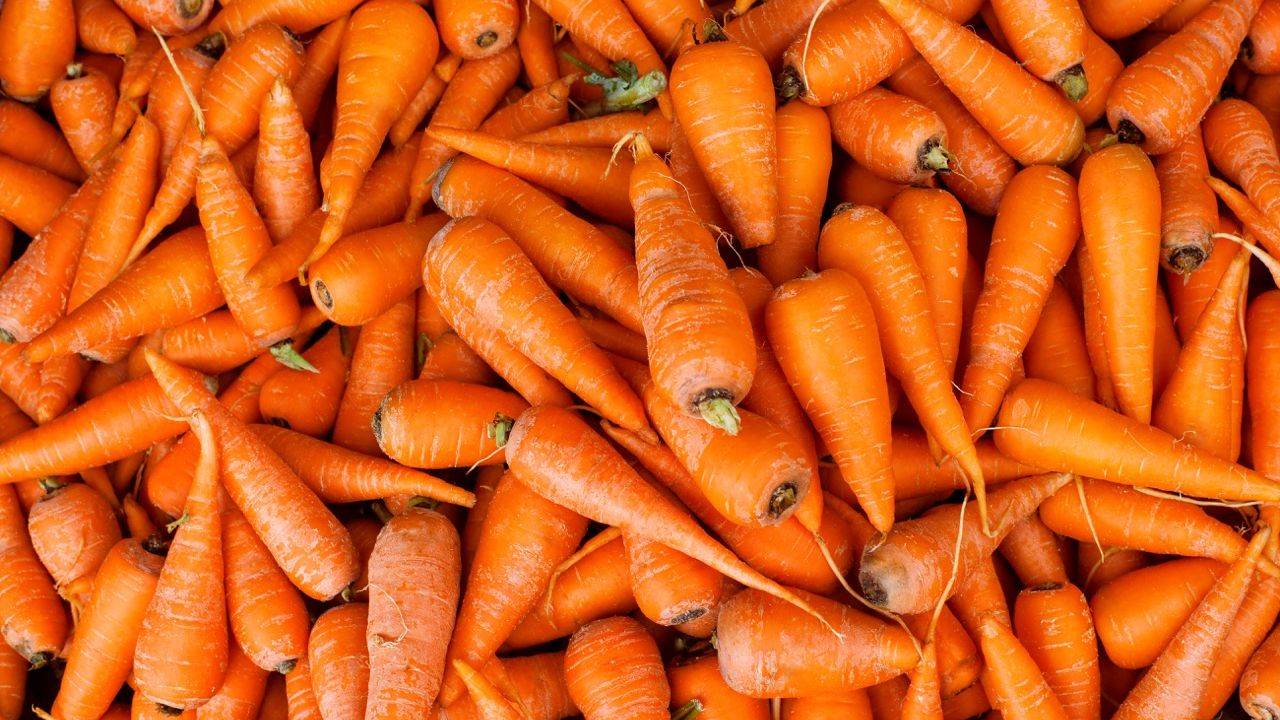Ingredient Spotlight: Meet the Overwintered Carrot
Apr 03, 2025
As winter loosens its grip and the first hints of spring arrive—muddy boots, thawing fields, the smell of soil waking up—there’s a quiet treasure hiding just beneath the surface: overwintered carrots.
These aren’t your average grocery store carrots. These are the deeply sweet, crisp, earthy beauties that have endured a long winter underground, protected by layers of mulch and snow, soaking up the rhythm of the seasons. They’re one of the first gifts of the early spring harvest and a powerful reminder that the best flavors often take time.
🥕 What Are Overwintered Carrots?
Overwintered carrots are seeded in late summer or early fall and left in the ground through the winter, rather than being harvested in the fall like most carrots. Farmers protect them with straw or mulch to insulate them from deep freezes. Come late winter or very early spring—often when there’s still frost in the mornings—those carrots are dug up, sweetened by the cold and packed with flavor.
🌱 Why They’re So Special
1. They’re Incredibly Sweet
Like overwintered spinach, carrots respond to cold by converting their starches into sugars to protect themselves from freezing. That process turns a standard carrot into something almost candy-like. We’re talking intensely sweet, crisp, and aromatic—like the carrot equivalent of maple syrup season.
2. They’re One of the First Spring Crops
These carrots bridge the hungry gap—the time when winter storage crops are running low and spring greens haven’t quite come in yet. Overwintered carrots fill that void with flavor and color. For local farmers, they offer an early-season harvest and income stream, and for us home cooks, they deliver a taste of spring when we need it most.
3. They Support Healthy Soil and Regenerative Practices
Leaving carrots in the ground over winter keeps soil covered and reduces the need for artificial storage or transportation. Organic and regenerative farmers often use overwintering as a way to work with nature, not against it—extending harvest seasons naturally, reducing energy use, and enriching the soil along the way.
🥣 How to Use Overwintered Carrots
When a vegetable is this good, you don’t need to do much. Here are a few ways to let overwintered carrots shine:
-
Roasted with olive oil and herbs, then finished with a splash of apple cider vinegar or maple syrup.
-
Shaved raw in salads or slaws—the sweetness pairs beautifully with a tangy vinaigrette.
-
Blended into soups or purees, where their natural sugars create a velvety depth.
-
Carrot-top pesto, if your bunch comes with fresh greens (use those tops!).
-
Or honestly? Just eaten raw, straight from the field or fridge.
These carrots don’t need dressing up—they’re perfect in their simplicity.
🛒 Where to Find Them
Look for overwintered carrots at your local farmers’ market, especially in March and early April. They may be a bit “ugly” by supermarket standards—often larger, a little twisted, or with soil still clinging to the skins—but that’s part of their charm. They're the real deal. Carrots with character. Carrots that have lived a little.
💚 Rooted in the Seasons
Overwintered carrots are a celebration of seasonal eating. They remind us that food grown slowly, harvested at the right time, and nurtured by nature—not chemicals—has flavors that can't be replicated in a lab or a plastic bag.
So the next time you see a bunch of gnarly, freshly dug carrots at the market this time of year, scoop them up. Roast them, grate them, snack on them raw. Let their sweetness reconnect you with the soil, the season, and the hands that grew them.
Because eating seasonally isn’t just good for you—it’s good for the planet, for your local farmers, and honestly? It just tastes better.
Stay connected with the latest posts, recipes & events!
Join our mailing list to receive the latest news and updates.
Don't worry, your information will not be shared.
We hate SPAM. We will never sell your information, for any reason.

